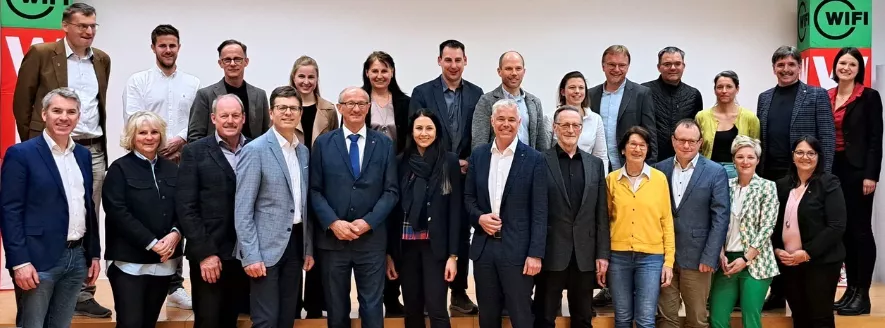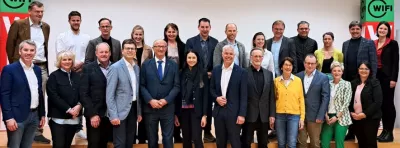Summary
Tyrol’s ‘Regional Management 2021+: Smart Region’ framework ensures collaborative work among the regional authority and the 10 local LAGs on the basis of Community-led Local Development (CLLD) principles. This resulted in the creation of a one-stop shop grounded in the lead-fund principle and intended to enhance coordination and avoid duplication. The facility assists rural municipalities, businesses, and NGOs with accessing public funding at local, regional, and national levels.
Results
- Growing acceptance and support for local initiatives across local, regional, and national levels, along with increased backing by regional stakeholders;
- The regional level has implemented various national initiatives, with additional funding allocated for regional policies, such as the set-up of a platform managed by a LAG that oversees voluntary activities;
- An ‘implementation pact’ between local and regional levels to deal with transformation – this is aligned with the European Green Deal and the Tyrolean climate and sustainability strategy, with a focus on joint implementation;
- The region has entered into partnerships with national entities on key issues such as climate change (KEM, KLAR), work-life balance (European Social Fund), Smart Villages, and rural innovation, contributing to local capacity building;
- Scale-up of successful local practices and projects at regional level, thereby strengthening LAGs’ role as innovators and development agencies;
- Broad mobilisation and integration of local stakeholders through the regional LAGs’ network of over 2 000 partners to enhance resilience and facilitate active local involvement in addressing future challenges;
- Synergies among funds and programmes, with a clear emphasis on effective implementation.
Resources
Documents
Context
Tyrol is a small mountainous region – one of nine in Austria – located on the border between Germany and Italy and inhabited by around 750 000 residents. The area is increasingly affected by environmental and societal challenges, such as climate change and digitalisation that need to be tackled through green and digital transformations of the region.
Tyrol benefits from a range of funding opportunities under the European Agricultural Fund for Rural Development (EAFRD), European Regional Development Fund for Interreg (ERDF IJG), and European Regional Development Fund for European Territorial Cooperation (ERDF ETC) for its regional development. To ensure efficient management of these funds and address pressing challenges, the region requires robust coordination of funds at all levels and commitment from various governance structures. To this end, the region established a one-stop shop providing access to multiple funding sources sources.
Objectives
Ensure harmonised and efficient cooperation among various structures and levels to achieve holistic and integrated regional development in Tyrol, fostering sustainable solutions in the long term.
Activities, key actors, and timeline
The ‘Regional Management 2021+: Smart Region’ concept is at the basis of Tyrol's regional governance model. The regional authority and a consortium of 10 LAGs, representing over 600 000 inhabitants, work together to ensure effective absorption of regional, state, federal, and EU funds, while adhering to CLLD principles. This CLLD multi-fund approach encourages cross-sectoral development, enabling the creation of a platform for all pertinent stakeholders.
To manage EU funding efficiently, the region adopted a streamlined one-stop shop approach, eliminating redundant structures at the local level and fostering synergies between programmes and projects.
At the regional level, the state department for development (de: ‘Landesentwicklung’) acts as a coordinator, facilitating governance among local structures and 28 regional stakeholders (‘governance of policymakers’). As an intermediate body, this department is tasked with contracting, monitoring, financial oversight, and performance reporting of the Tyrolean climate and sustainability strategy which provides a strategic framework.
To simplify and clarify regulations Tyrol uses the lead-fund principle according to which a designated lead fund or agency takes the primary responsibility for managing and distributing funds among various projects or initiatives. Initiatives and programmes are further coordinated to ensure cohesion (‘governance of implementers’) through equal-level support by and cooperation among regional and local entities.
Success factors/lessons learnt
Open cooperation and strong partnerships, both vertical and horizontal, are key to establishing good multi-level governance, flexible and adaptive to ongoing changes.
-
Complex systems require a clear governance structure to actively engage stakeholders;
-
Effective communication and coordination of funds are vital, requiring both in-house coordination and trustworthy cooperation with programme authorities;
-
The lead-fund principle requires common, simple, and clear rules to be manageable, with additional administrative improvements as necessary;
-
It is crucial to understand the LEADER method and recognise its potential for addressing grand challenges;
-
Shared decision-making does not imply ‘losing control’ – good governance relies heavily on soft governance and trusted cooperation;
-
Political responsibilities for funds should be aligned to maintain focus on a common overall vision, rather than individual optimisation of sub-systems;
-
This governance model prioritises local needs over different funding regimes, ensuring efficient management and distribution of funds, while promoting synergies among them;
-
Time and experience are necessary to build confidence at local and regional levels through a gradual process of gaining partners in new fields, such as climate action.
Contacts
Martin Traxl: martin.traxl@tirol.gv.at +43 512 508 3618
Stefan Niedermoser: niedermoser@regio3.at +43 664 555 8893

